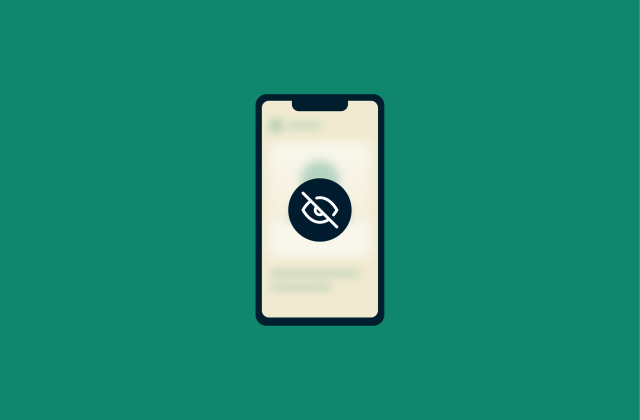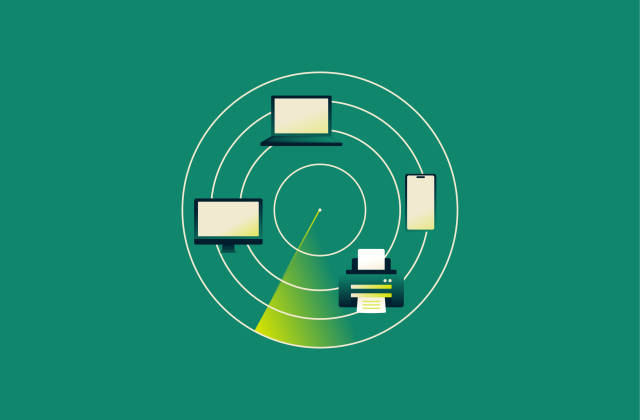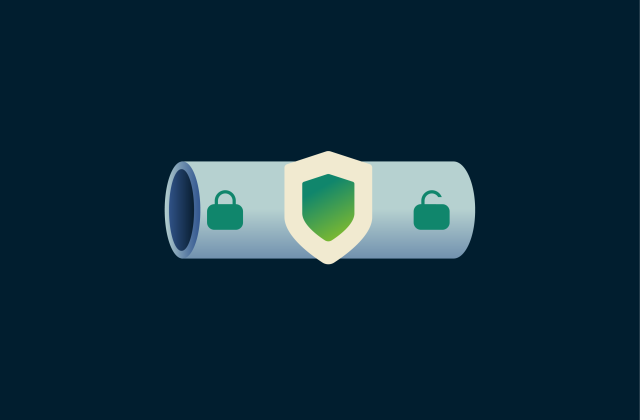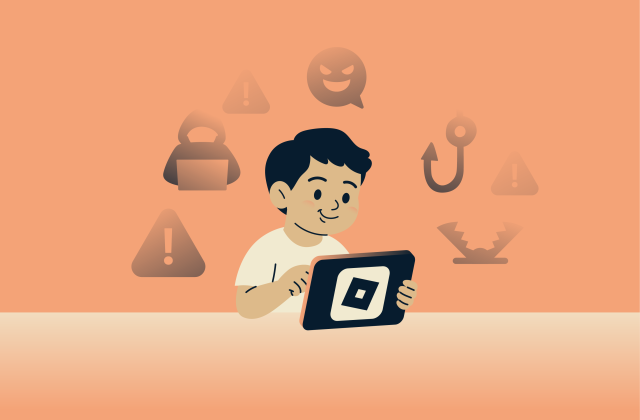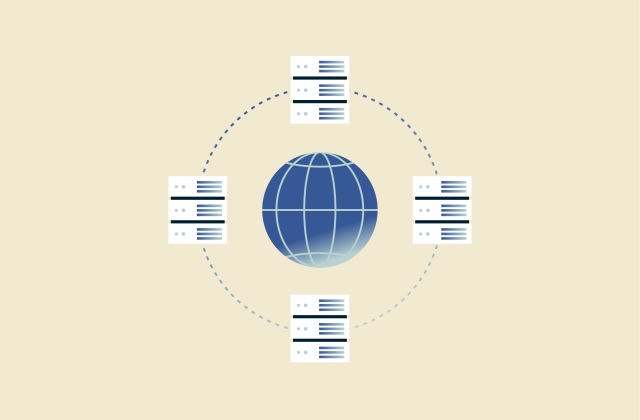How to delete your Twitter account permanently

For years, Twitter (now X) has been the go-to place for breaking news, funny memes, and connecting with people across the globe.
But whether it’s worries about how your data’s handled, wanting to clean up your professional image, or just feeling burned out by the endless scroll, you might be ready to call it quits.
Permanently deleting your account is a big step, but it’s also a powerful way to take control of your digital footprint. This guide will walk you through the process so you can completely remove your profile and data with confidence.
Why would you want to delete your Twitter account?
There are plenty of valid reasons to permanently delete your Twitter account. It’s a personal decision, but two common ones stand out: protecting your data and feeling like the platform has changed.
1. Privacy concerns and data tracking
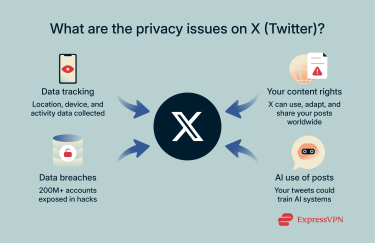
Twitter collects a lot of information about you, both the details you share directly and the data gathered from how you use the platform.
When you sign up, you provide things like your display name, username, email or phone number, date of birth, and sometimes payment details if you’re using paid services. If you set up a professional account, you might also share information like your business category, contact info, and even your street address.
But it doesn’t stop there. X also tracks how you use the platform: your posts, likes, DMs, viewing history, who you interact with, and your approximate location. It gathers information about your device and your connection (like IP addresses and browser type) and can link your account to other devices or services you use.
In short, X builds a detailed profile of you based on everything from what you post and who you follow to where you log in and what you click on.
What’s more, in late 2024, X updated its terms of service to give the platform a “worldwide, non‑exclusive, royalty‑free license” to use, copy, adapt, and distribute user content across any media or technology, including ones that don’t exist yet.
While the terms don’t specifically mention AI or machine learning, many see this broad language as leaving the door open for X to use tweets, photos, and other content to train AI models. That interpretation has sparked backlash, especially among creators worried about their work being repurposed without clear consent or compensation.
Twitter has also faced major data leaks. In early 2023, a database containing over 200 million Twitter profiles was shared on a popular hacking forum. The data had actually been collected back in 2021 by abusing a Twitter API that allowed people to match email addresses to Twitter profiles. The leaked dataset included email addresses, social media profiles, names, and usernames.
While no passwords were exposed, this type of data is still valuable to criminals, who can use it for phishing attacks, identity theft, and doxxing. The incident raised serious questions about Twitter’s ability to protect user data from misuse.
Deleting your account is one of the simplest ways to take back some control over your data and reduce your digital footprint. Your tweets, likes, DMs, and search history can hold a lot of personal information. By deleting your account, you stop X from gathering new data about you and wipe out your public history on the platform.
2. Platform changes and user dissatisfaction
Since 2022, Twitter has seen sweeping changes to its features, policies, and overall identity.
The platform's content moderation policies have been relaxed, leading to the reactivation of previously banned accounts and an increase in misinformation and conspiracy theories. These changes have created a more toxic environment that many users find unwelcoming.
One of the most controversial changes involved the block feature, a key tool for user safety. Previously, blocking someone on Twitter meant they couldn’t see your posts or profile, and they couldn’t interact with you. After the change, blocked users can still see your public posts, but they can’t follow, comment on, or direct message you. Critics argue this weakens a core safety feature and makes it harder to avoid harassment without locking your entire account.
Changes like these have pushed people to look for other platforms. Many feel the site they once valued for community and information has become unpredictable. For them, deleting their account is a vote of dissatisfaction and a move to find a better online space.
What to know before deleting your Twitter account
Before you hit the delete button, there are a few things you need to understand. Deleting an account isn’t instant, and it actually starts with deactivation, not immediate deletion.
Deactivation vs. permanent deletion
X doesn’t let you delete your account on the spot. First, you deactivate it, which hides your profile and tweets for 30 days. During this time, your username and profile won’t be visible on X.
If you do nothing for those 30 days, your account is permanently deleted. At that point, your tweets, profile, and messages are removed from public view, and your username may be released for others to claim. Like most big platforms, some of your data may still exist in backup systems for a while, but it’s no longer publicly accessible.
The 30-day period is essentially a cooling-off window. If you log back in during that time, your account will be fully restored, and the deletion process will be canceled.
Can you reactivate a deleted Twitter account?
You can only reactivate your account during that 30-day deactivation window. Just log in using your username and password, and you’ll see an option to restore your account. Once confirmed, your tweets, messages, and followers should reappear, although it might take a few minutes.
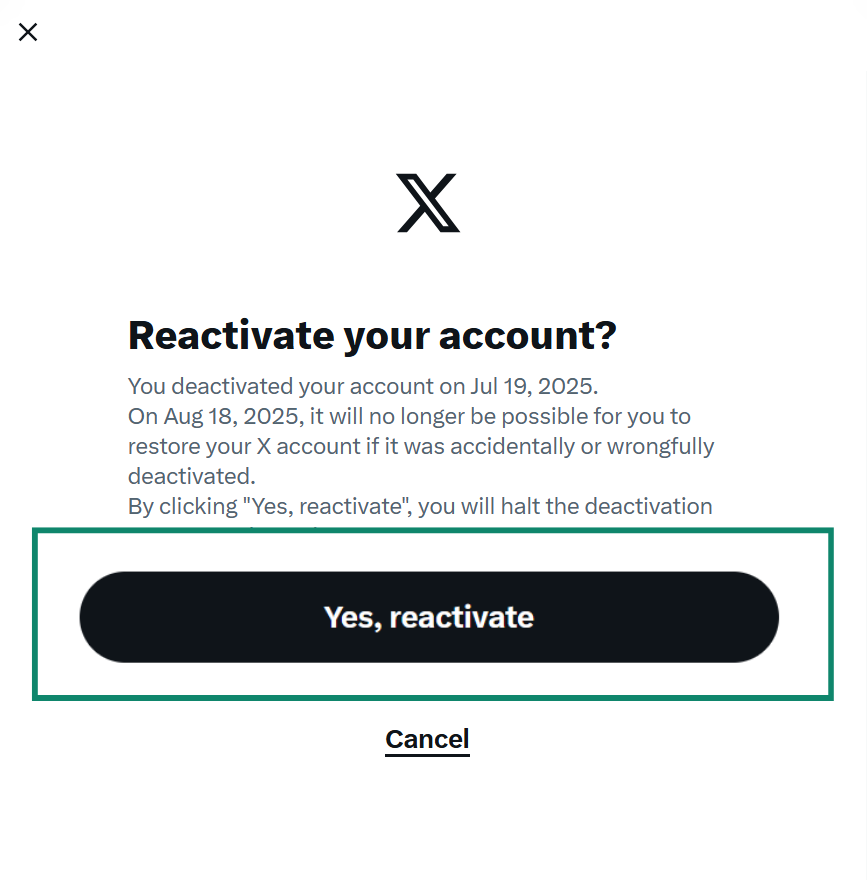 After 30 days, your account is gone for good, and there’s no way to get it back. So, if there’s even a small chance you’ll want to return, make sure to log in before that deadline.
After 30 days, your account is gone for good, and there’s no way to get it back. So, if there’s even a small chance you’ll want to return, make sure to log in before that deadline.
What data Twitter retains
Even after your account is permanently deleted, Twitter may keep some information for security, legal, and regulatory reasons:
- Payment records are kept as long as you use paid services, and records of transactions are stored longer to meet legal requirements.
- Communications with X Support (emails or messages) may be stored for up to 18 months unless a longer retention period is legally necessary.
- Device, location, and log information collected via cookies can be kept for up to 13 months.
- Advertising and interaction data (like how you engage with ads and third-party content) is typically retained for up to 12 months.
- Identifiers for suspended accounts (such as email addresses and phone numbers) may be kept indefinitely to prevent repeat policy violations.
X may also retain some data longer if required to comply with the law, handle disputes, or maintain platform security.
Keep in mind that some of your tweets or profile information may remain visible on:
- Search engines like Google or Bing if they indexed your posts before deletion. These links will eventually lead to error pages but can persist for some time. You can speed up removal using tools like Google’s Refresh Outdated Content.
- Third-party services you connected to X, which may keep any data shared with them. You need to manage and revoke these permissions directly in those services’ settings.
- Web archives, such as the Wayback Machine, which create independent snapshots of websites. If your profile or tweets were archived, they might still be viewable there because X has no control over external archives.
How to back up your Twitter data
Before you say goodbye to your account, you might want to save a copy of your history. Twitter allows you to download your Twitter archive, which is a snapshot of your profile data and activity. This archive contains almost everything you’ve ever done on the platform, including:
- Your profile information
- All your posts (tweets and retweets)
- Direct messages
- Moments and lists
- Media uploads (images, videos, and GIFs you’ve attached to tweets)
- A list of your followers and accounts you follow (follower list)
- Your address book (if shared)
- Interests and demographic data inferred about you
- Ads you’ve seen or interacted with
To get your data, you need to make an information request from your account settings. Here’s how:
- On a desktop browser, click the More button (the three dots in the left sidebar) and go to Settings and privacy. On the mobile app, tap your profile picture in the top-left corner, then Settings & Support > Settings and privacy (Android) or just Settings and privacy (iPhone).
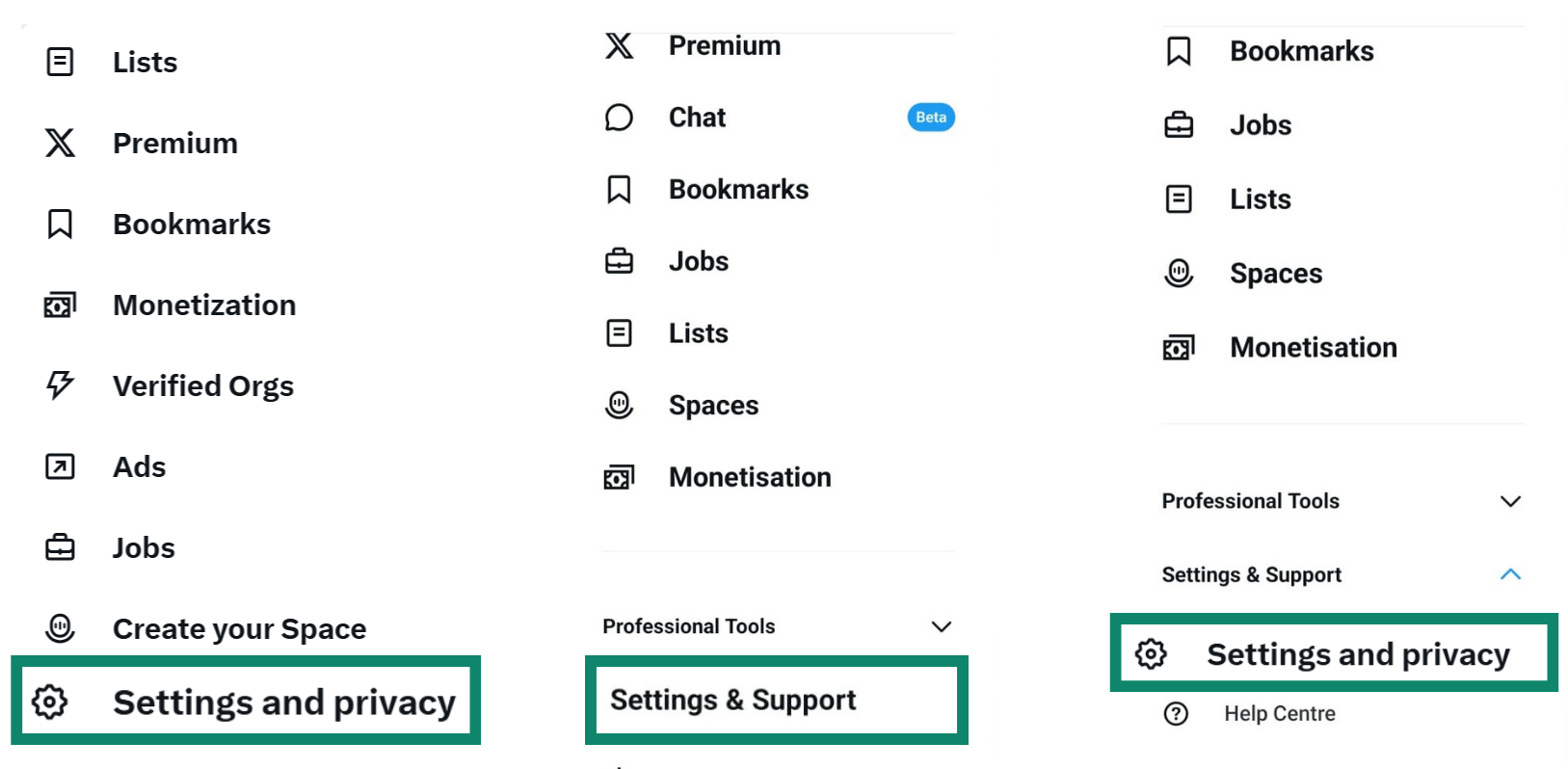
- Select Your account > Download an archive of your data.
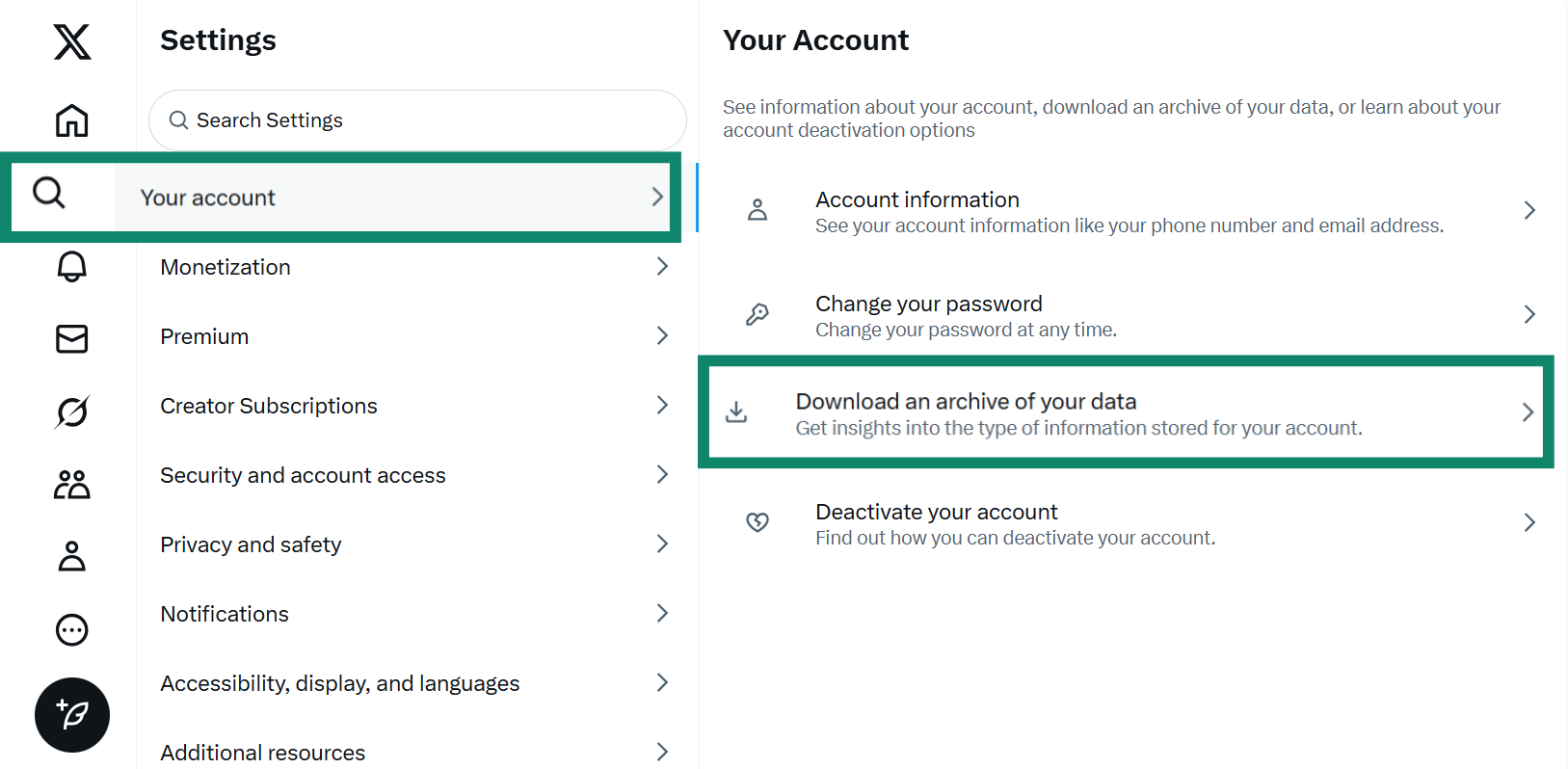
- Enter your password and click Next.
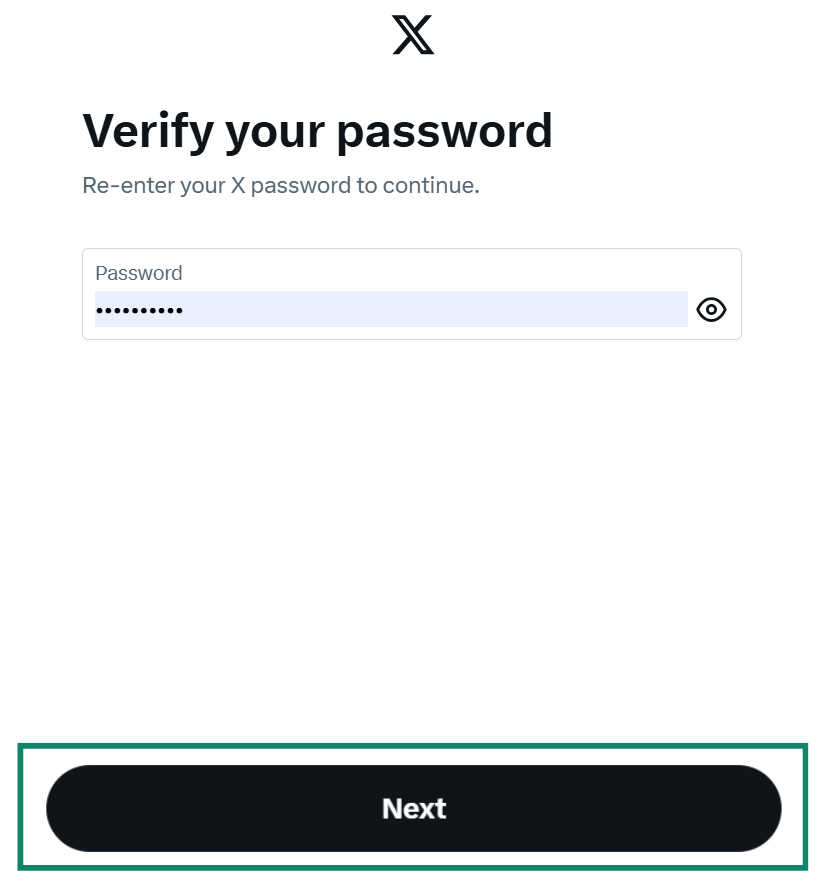
- Click Send code to verify your identity via email or phone.
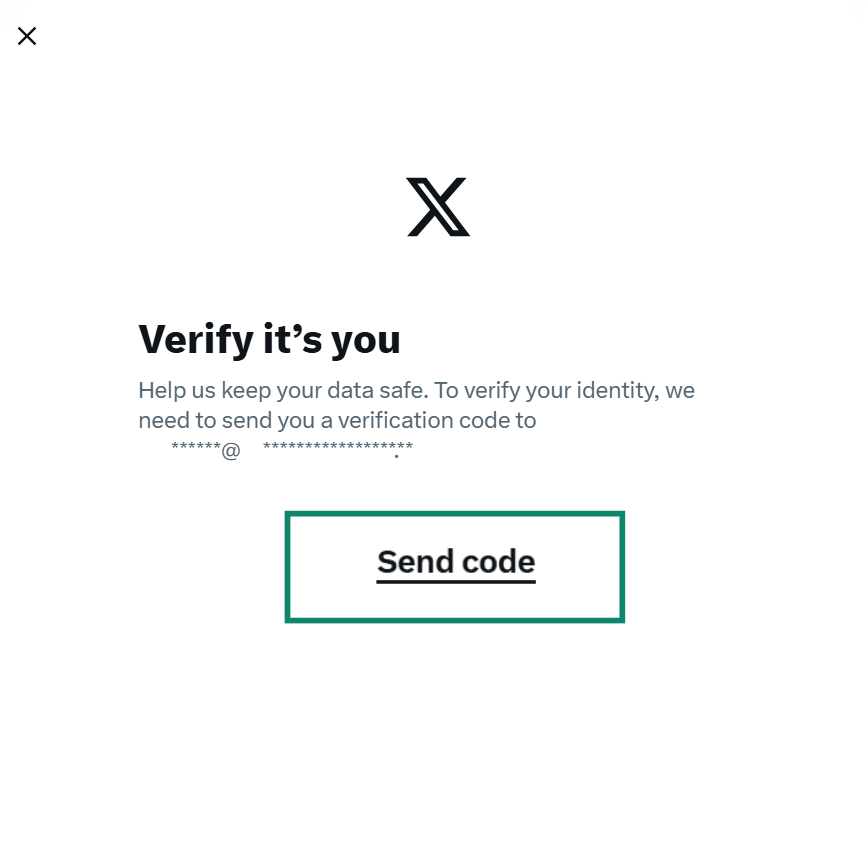
- Enter the verification code you’ll receive and click the Request archive button.
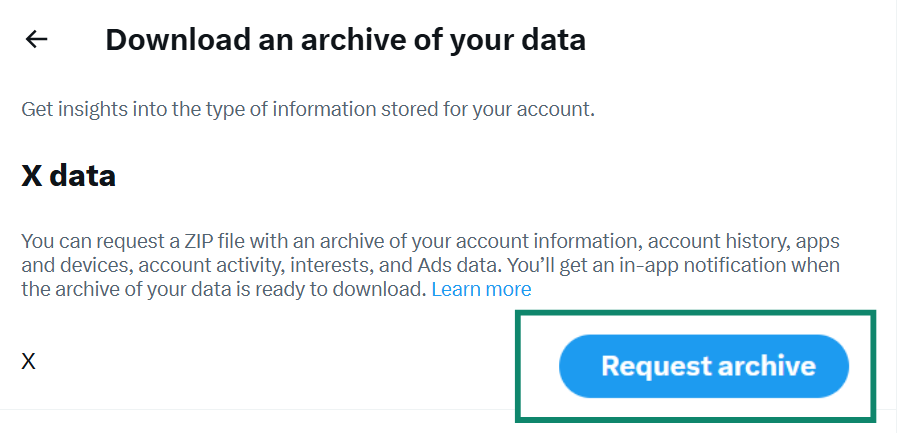
- You’ll get an email or push notification once the archive is ready.
- Click the provided Download data button while logged in to your account and save the .zip file.
The archive contains both HTML and JSON files so you can view your history easily or process it programmatically.
How to delete Twitter on desktop
If you’re on a laptop or desktop computer, the process for deactivating your account is straightforward. It only takes a few clicks from within your settings. Here’s a step-by-step guide on how to delete your Twitter account using a web browser:
- Click the More button (three dots) in the left sidebar and select Settings and privacy.
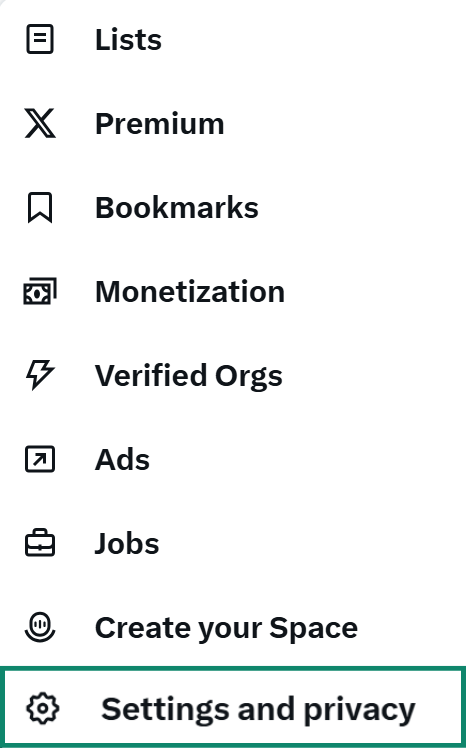
- Go to Your account and click Deactivate your account.
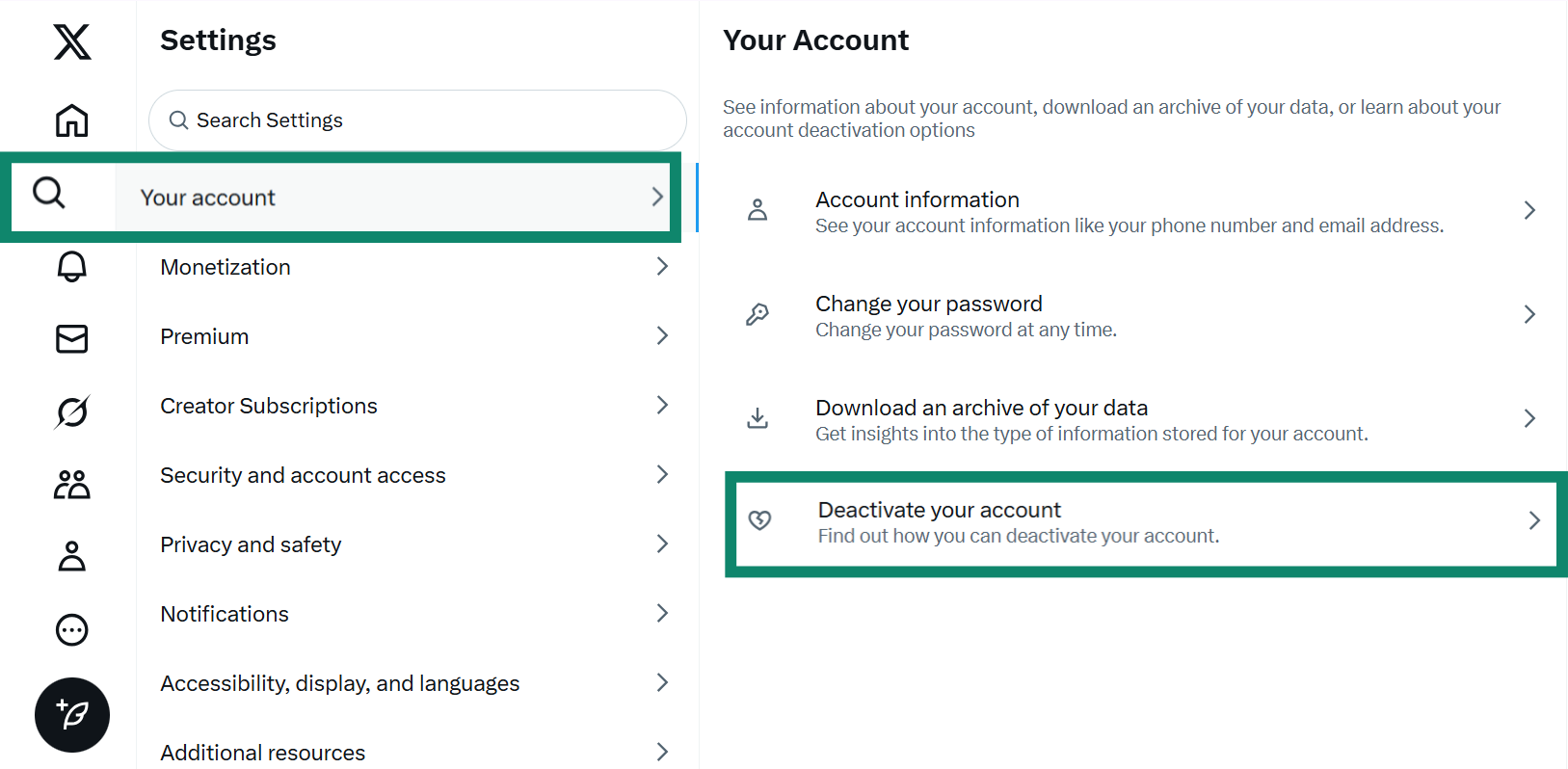
- Read the information provided about what happens when you deactivate. Then, click the Deactivate button at the bottom of the page.
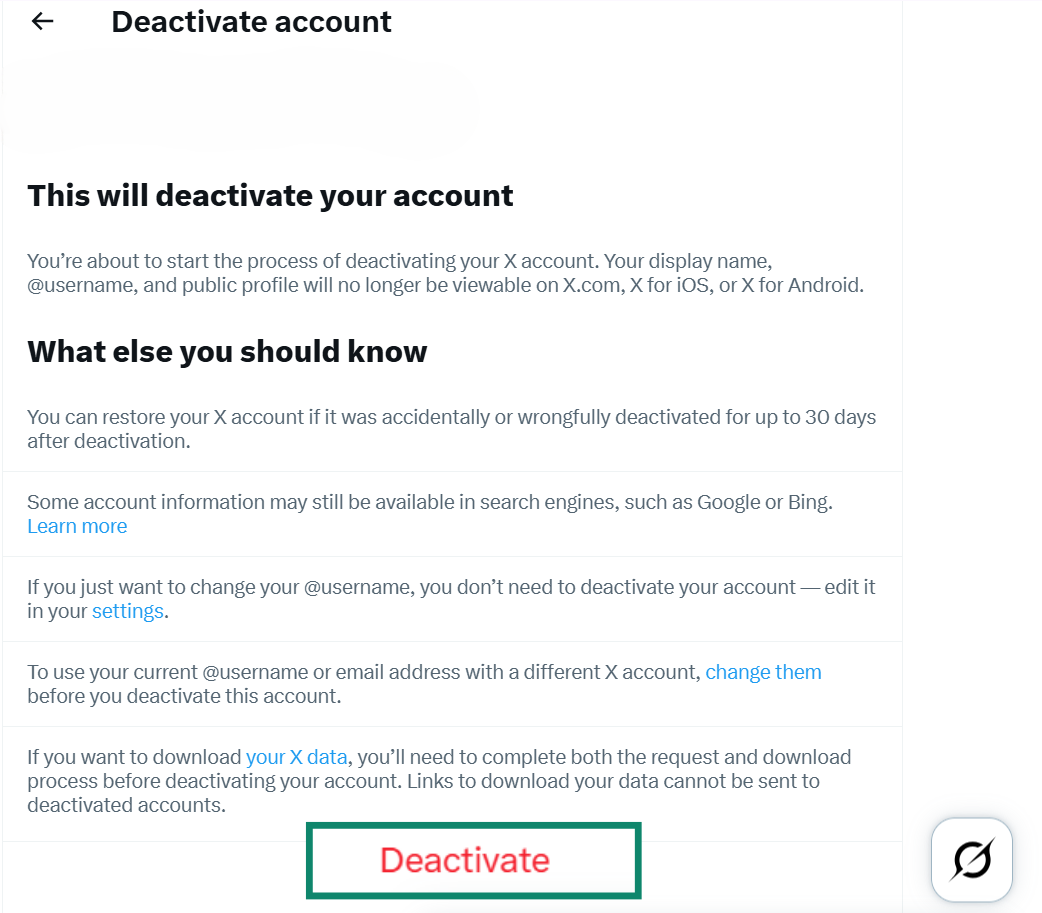
- Enter your password when prompted and click Deactivate again to confirm.
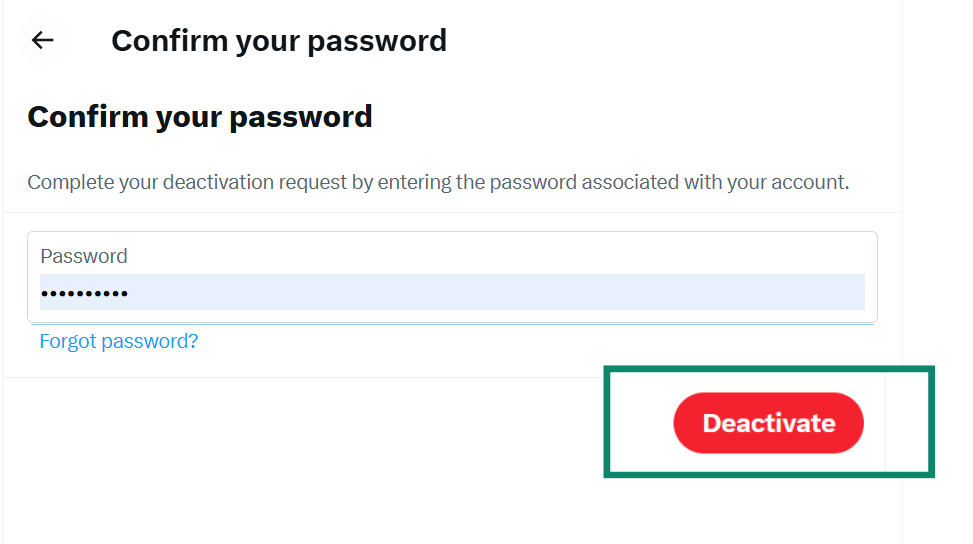
That’s it. Your account is now deactivated. As long as you don’t log back in for 30 days, it will be permanently deleted.
What to do if your Twitter account won’t deactivate on desktop
Sometimes things don’t go as planned. If you’re clicking the deactivate button and nothing is happening, or you’re getting an error message, here are a few things you can try:
- Check your login details: Make sure you're using the correct login credentials. If you've forgotten your password, use the Forgot Password link to reset it before attempting to deactivate.
- Clear your browser’s cache and cookies: Old data stored in your browser can sometimes interfere with website functions. After clearing them, close your browser, reopen it, and try the deactivation process again.
- Try a different web browser: Occasionally, compatibility issues or browser extensions can cause problems. Switching from Chrome to Firefox, for example, might solve the issue. You could also try disabling all your browser extensions before attempting to deactivate, as ad-blockers or privacy scripts can sometimes prevent pages from loading correctly.
- Unstable internet connection: The deactivation request needs a solid connection to Twitter's servers. A weak or spotty internet connection can cause the process to fail. Make sure you’re on a stable Wi-Fi network. You can also try switching to your phone’s mobile data to see if the connection is the problem.
- Server issues: There could be a temporary issue with Twitter's servers. Wait for an hour or so and then try again. If the problem continues, your only remaining option is to contact Twitter’s support center for help, but be prepared for a potentially slow response.
- Account suspension or lock: You can’t deactivate an account that is currently suspended or locked for policy violations. You must first resolve the issue by following Twitter's appeal process. Once your account is restored to good standing, you’ll be able to deactivate it.
- Deactivation frequency limit: Twitter may limit how often you can deactivate and reactivate your account. If you recently reactivated your profile, you’ll likely need to wait for a period before you can deactivate it again. This is to prevent misuse of the feature. There isn’t an official timeline, so if this applies to you, wait a few days and try again.
How to delete Twitter on iOS (iPhone and iPad) and Android
The steps to delete your Twitter account are the same on both iOS and Android. The mobile app’s layout is consistent across both platforms, so you’ll find the options in the same menus:
- Open the Twitter app on your iPhone or iPad. Tap your profile picture in the top-left corner and choose Settings and privacy.
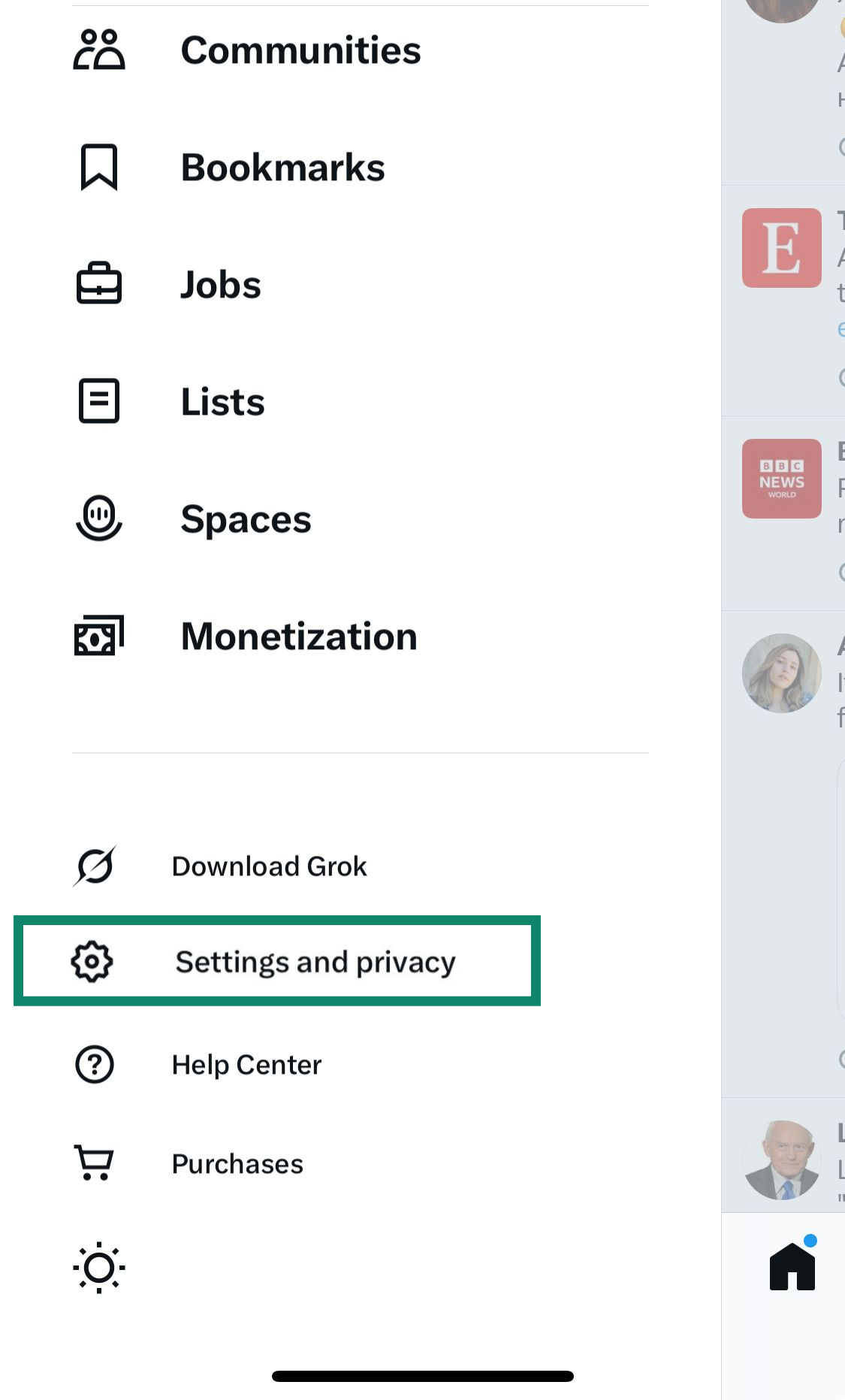
- Select Your account and tap Deactivate your account.
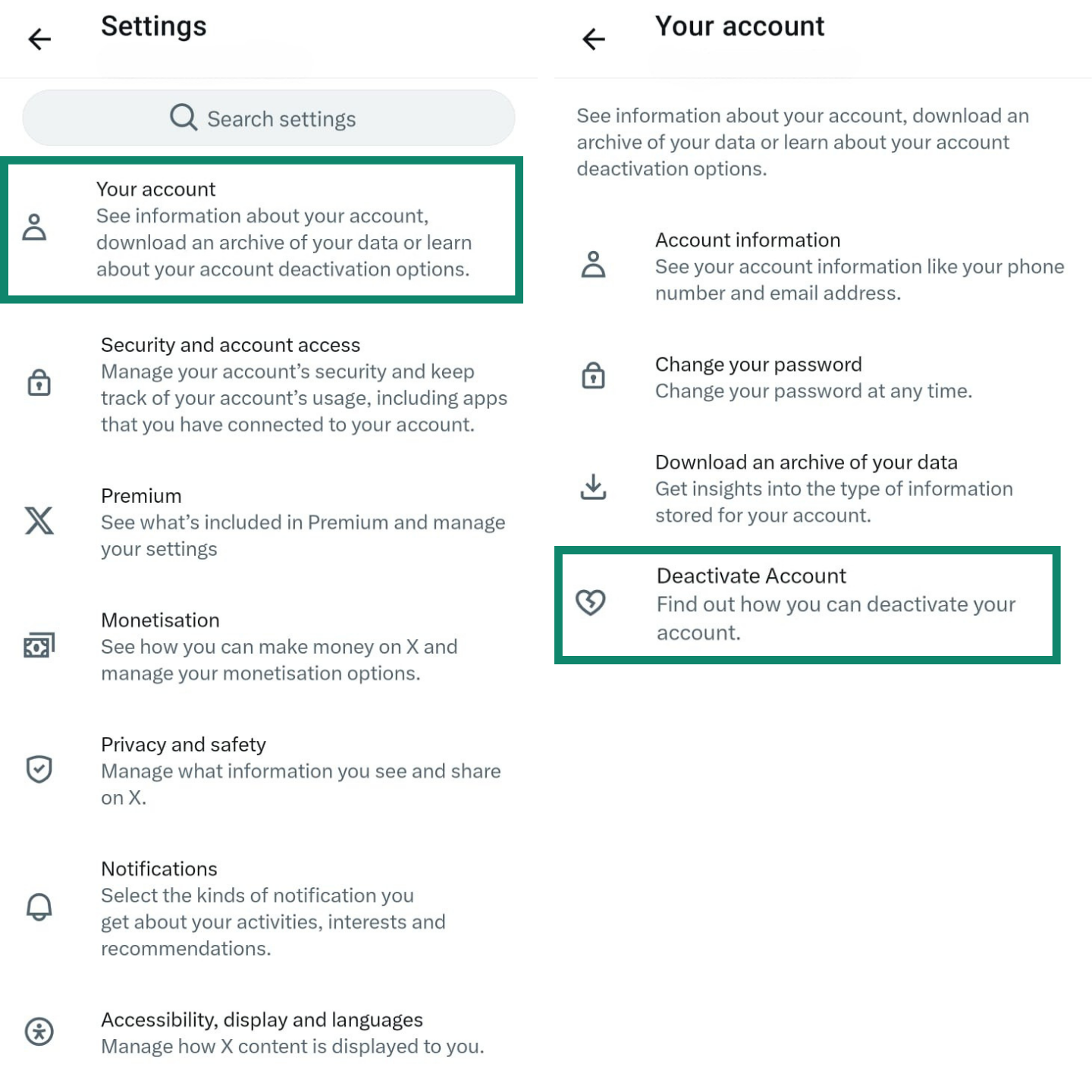
- Read the information provided and tap Deactivate. When prompted, enter your password and tap Deactivate one more time to confirm.
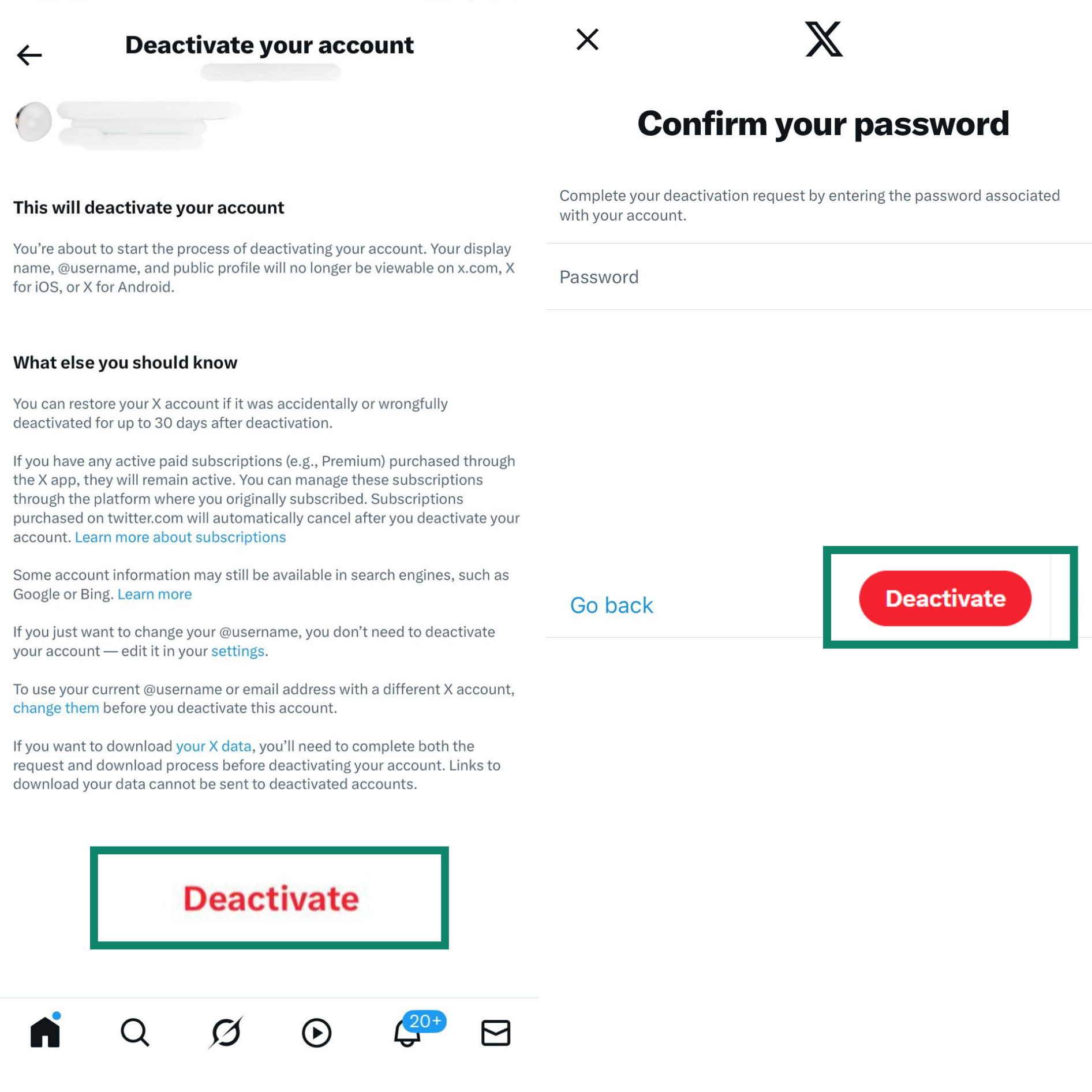
What to do if the delete option isn’t showing in the app (on iOS)
The most common reason is that your app is outdated. Apple has guidelines that require all apps offering account creation to also offer in-app account deletion. If your Twitter app is an older version, it might not have this feature fully implemented. Update your Twitter app to the latest version through the App Store.
If you're using a business or professional account, some features may be organized differently.
Force close the Twitter app and restart it. On newer iPhones, swipe up from the bottom and hold, then swipe up on the Twitter app to close it. On older iPhones with a home button, double-tap the home button and swipe up on the Twitter app.
Try logging out and logging back in to refresh your account settings. Sometimes account data needs to be refreshed to display all available options. If the option still isn't visible, you may need to use the desktop version of Twitter through your iPhone's web browser and follow the desktop deletion process.
How to fix common issues when deleting Twitter on Android
Android users might occasionally face issues with the app when trying to deactivate their account. If the deactivate button seems unresponsive or you’re getting a generic error, there are a few troubleshooting steps you can take.
First, try clearing the app’s cache:
-
- Go to your phone’s Settings > Apps and scroll down until you find X.
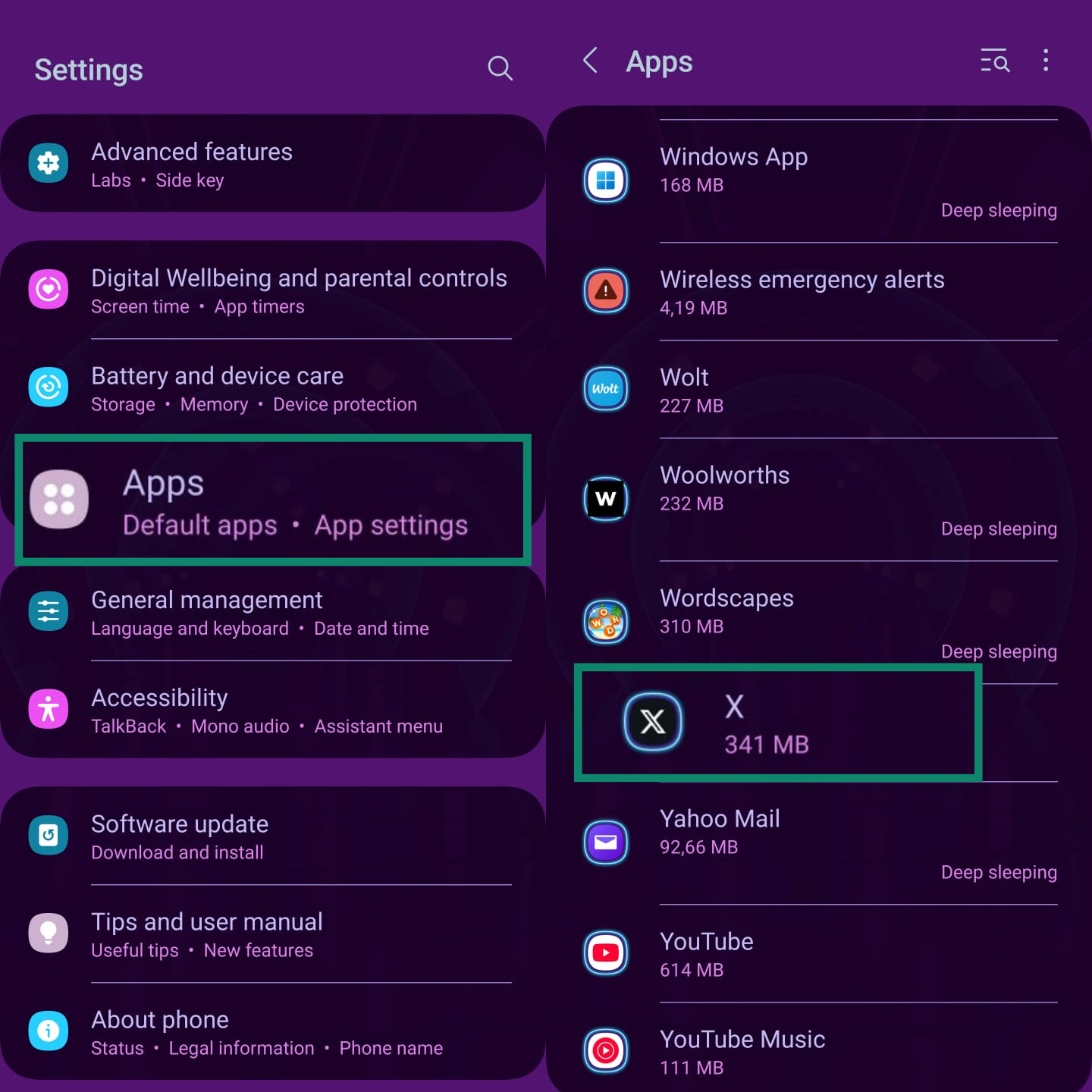
- Tap Storage and choose Clear cache.
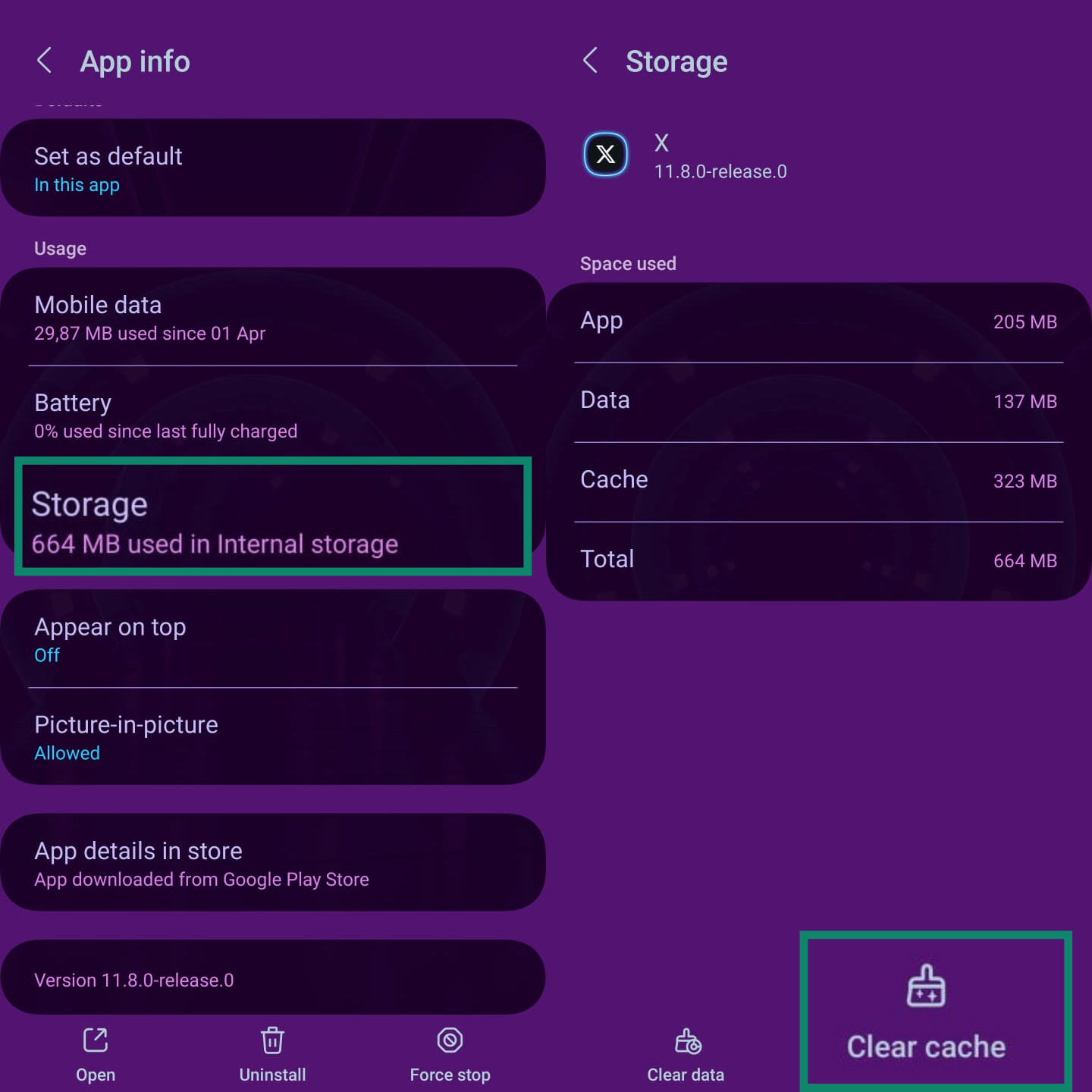
- Go to your phone’s Settings > Apps and scroll down until you find X.
This can resolve many common app problems without affecting your data. If that doesn’t work, check the Google Play Store for any updates to the Twitter app. Running an old version can cause unexpected behavior. Make sure your app is fully updated, then try the deactivation process again.
As a final resort, if the app is still giving you trouble, use the browser method. Open Chrome or any other browser on your Android device, navigate to X.com, log in, and follow the same steps outlined in the desktop guide. The website is a reliable alternative if the native app is failing you.
FAQ: Common questions about deleting a Twitter account
Can I delete my Twitter account without logging in?
No, you can’t delete your account without being able to log in. You must be able to access your account settings to initiate the deactivation process, which requires your login credentials.
If you’ve forgotten your password, you should use the “Forgot password?” link on the login page to reset it. For this to work, though, you must have access to the email address or phone number you used to create your Twitter account.
Can I delete a suspended Twitter account?
Deleting a suspended Twitter account is more complicated than deleting a regular account. If your account is suspended, you can’t deactivate it through the normal process. You'll first need to submit an appeal through Twitter's support system to have the suspension reviewed.
Is deactivating your Twitter account the same as deleting it?
No, they are two different stages of the same process. Deactivation is the first step and is a temporary, reversible 30-day period where your account is hidden. Deletion is the permanent, irreversible erasure of your account and data that happens automatically after the 30-day deactivation period ends.
How long does it take for Twitter to permanently delete my account after deactivation?
Twitter permanently deletes your account after 30 days of deactivation. This period begins immediately after you complete the deactivation process. During this time, your account is hidden from other users but still exists in Twitter's systems. After the 30-day period expires, Twitter begins the permanent deletion process.
How can I download my Twitter data before deleting my account?
You can download your Twitter archive from your account settings. Go to Settings and privacy > Your account > Download an archive of your data. You’ll need to confirm your password, and Twitter will prepare a .zip file containing your tweets, direct messages, media uploads, and more.
Should I delete my tweets before deleting my Twitter account?
This isn’t necessary. When your account is permanently deleted after the 30-day deactivation, all of your tweets will be deleted along with it. The entire tweet history is erased from public view on the platform.
That said, some users choose to delete their tweets manually before deactivation for extra peace of mind, especially to ensure they aren't visible during the 30-day window if the account were to be accidentally reactivated, but it’s not a required step. The final deletion process will take care of it for you.
What happens after you delete your Twitter account?
After you delete your Twitter account, it first goes into a 30-day deactivation period. During this time, your profile and tweets are hidden, and you can still reactivate your account by logging back in. If you don’t log in within those 30 days, your account is permanently deleted.
Your username becomes available for others, and most of your data is removed from Twitter’s systems, although some information (like legal records or security data) may be kept for a while.
Take the first step to protect yourself online. Try ExpressVPN risk-free.
Get ExpressVPN







